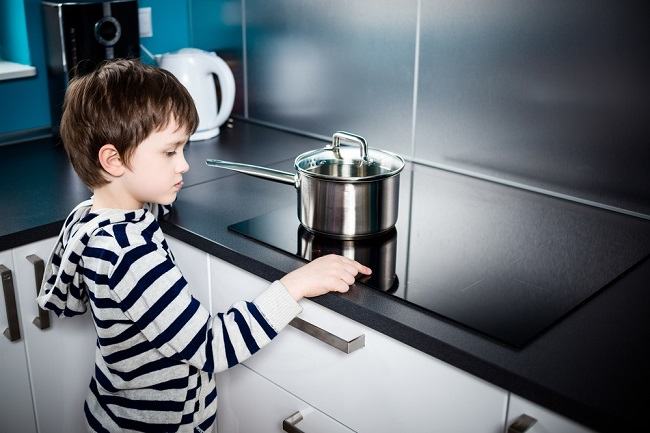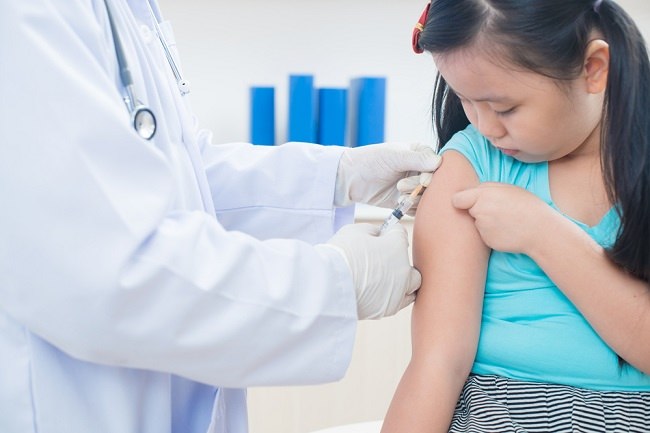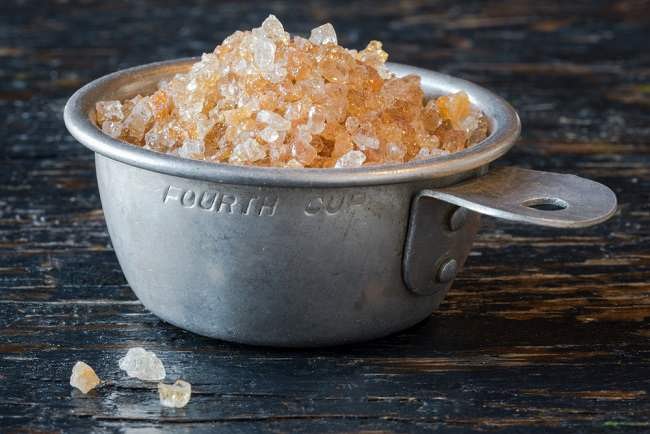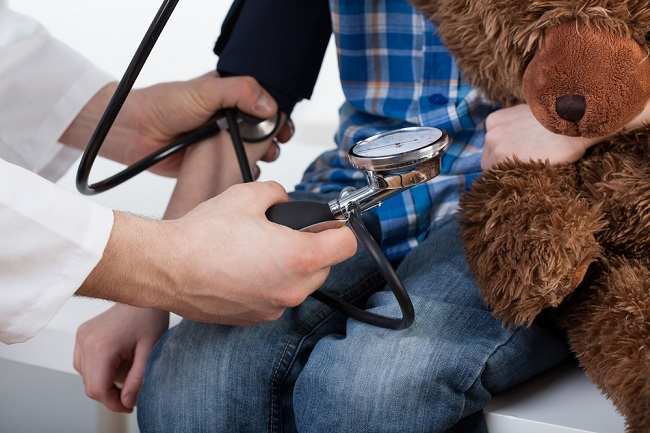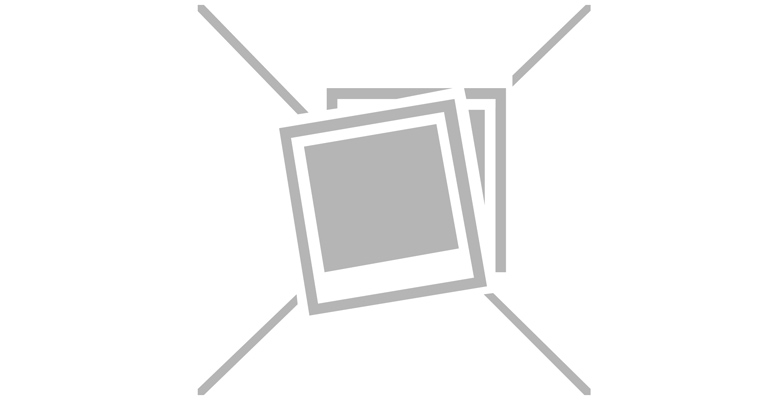Kbile duct cancer or cholangiocarcinoma is a cancer that occurs in the bile ducts (bile duct). Bile duct cancer will cause symptoms of jaundice, although at first it does not cause symptoms.
Cholangiocarcinoma is a rare disease and usually affects people aged 50 years and over. The cause itself is not known, but bile duct cancer is more at risk in someone who suffers from bile duct disorders or suffers from liver disease.

The bile duct is the channel through which bile is produced by the liver. The bile that functions to digest fat is then stored in the gallbladder. When food enters the small intestine, bile will flow from the gallbladder through the bile duct, then enter the small intestine and mix with food.
Symptoms of Cholangiocarcinoma
Early-stage cholangiocarcinoma usually causes no symptoms. New symptoms appear when the cancer tissue has enlarged. Patients with bile duct cancer may experience different symptoms, depending on the initial location of the cancer. In general, the symptoms of cholangiocarcinoma include:
- Symptoms of jaundice include yellowing of the skin and eyes, itching, dark urine, and pale stools.
- Abdominal pain that can radiate to the back.
- Fever.
- Weak.
- Weight loss.
When hcurrent to dokter
Immediately consult a doctor if symptoms of bile duct cancer appear, such as jaundice, to get the right treatment.
In addition, make regular check-ups with your doctor if you have diabetes or hepatitis B, so that treatment and disease progression can be monitored. Both of these chronic diseases are thought to be at risk of causing bile duct cancer.
If you are at risk of developing hepatitis B, for example because you work as a medical officer, then you need to consult a doctor to get the hepatitis B vaccine.
Causes of Cholangiocarcinoma
Cholangiocarcinoma occurs due to changes or gene mutations in the tissues that make up the bile ducts. This gene change causes the tissue to grow abnormally. However, the main cause of this gene change is not known with certainty.
Although the cause is unknown, there are several conditions that increase a person's risk of developing cholangicarcinoma, including:
- Bile duct disorders from birth, such as bile duct cysts.
- Have liver disease, such as hepatitis B, cirrhosis, or a parasitic infection of the liver.
- Suffer primary sclerosing cholangitis (PSC), which is an autoimmune disease that causes narrowing of the bile ducts.
- Aged 50 years and over.
- Smoking habit.
- Suffering from chronic diseases, such as diabetes.
- Obesity.
Type-Jenis cholangiocarcinoma
Based on the location of the appearance of cancer, cholangiocarcinoma can be divided into three types, namely:
- Intrahepatic cholangiocarcinoma, which is cancer of the bile ducts in the liver.
- Distal cholangiocarcinoma, which is cancer that arises in the bile ducts close to the small intestine.
- Klatskin tumor, which is cancer that arises in the bile ducts that will exit the liver.
DiagnosisCholangiocarcinoma
To diagnose cholangiocarcinoma, the doctor will ask the patient's symptoms and medical history. After that, the doctor will perform a physical examination. If it is suspected that you have bile duct cancer, your doctor will conduct a follow-up examination to determine whether you have cholangiocarcinoma or not.
Some of the further inspection methods that can be carried out are:
- Scanning tests, such as ultrasound, CT scan, or MRI, to look for abnormal conditions of the bile ducts.
- Endoscopic retrograde cholangiopancreatography (ERCP) or a combination of endoscopy with X-rays of the bile ducts to examine the bile ducts in more detail.
- Percutaneous transhepatic cholangiography (PTC), also to see the bile ducts in more detail with the catheterization method.
- Biopsy, by taking a sample of bile duct tissue for examination in the laboratory. A biopsy can be performed during ERCP or PTC.
- Blood tests, by checking levels of tumor markers CA 19-9 and liver function.
Stadium cholangiocarcinoma
After conducting an examination, the doctor will determine the stage of bile duct cancer suffered by the patient to determine treatment. The division of bile duct cancer stages is as follows:
- Stage 1At this stage, the cancer tissue is still small and is only found in certain parts of the bile duct.
- Stage 2At this stage, the cancerous tissue has begun to enlarge and can spread to the tissues around the bile duct.
- Stage 3At this stage, the cancerous tissue has spread to the lymph nodes around the cancer.
- Stage 4At this stage, the cancer tissue has spread to other organs (metastasize).
Cholangiocarcinoma Treatment
Treatment of bile duct cancer aims to overcome the symptoms that arise and cure the cancer. Cholangiocarcinoma that is diagnosed and treated early has a greater chance of recovery. The following are some treatment options for treating cholagiocarcinoma:
Operation
The main treatment step for cholangiocarcinoma is surgery. Some of the surgical methods that the patient can undergo are:
- Laparoscopy
Laparoscopy is a surgical method that uses a laparoscope to remove as much cancerous tissue as possible.
- biliary drainage
This method is performed with the operation bypass to restore the flow of fluid from the bile ducts that have been disrupted by cancer.
- Pring gold (stent)
This surgery aims to maintain the flow of bile by widening the bile ducts that are narrowed by cancer.
- Transplantheart
Liver transplant is done by taking the patient's liver and replacing it with liver from a donor. This action is performed on cholangiocarcinoma which is located in the liver.
If the cancer has entered an advanced stage and has spread to surrounding tissues, surgery is performed not only to remove the cancerous tissue, but also to remove part of the gallbladder and bile duct, pancreas, and part of the intestine. This procedure is called surgery Whipple.
Radiotherapy
To help kill cancer cells that are not surgically removed, patients may undergo radiotherapy. Radiotherapy is done with high-energy rays to kill cancer cells.
Chemotherapy
In addition, chemotherapy can also be done to kill cancer cells through drugs, such as: gemcitabine, cisplatin, fluorouracil, gemcitabine,or oxaliplatin. Radiotherapy and chemotherapy can be combined to increase the effectiveness of cancer treatment, especially if the cancer has spread.
Supporting drugs
Doctors will also give drugs to relieve symptoms experienced by patients with bile duct cancer, such as morphine to relieve pain.
After treatment, patients still need to have regular check-ups through scans and laboratory tests, so that the development of conditions and side effects of treatment can be monitored.
If the cancer is declared calm, the doctor will recommend regular checkups every six months, for several years after treatment is complete.
Cholangiocarcinoma complications
Several complications can arise in cholangiocarcinoma due to blockage of the bile duct by cancer tissue. These complications are:
- Bile tract infection
- Cirrhosis
Cholangiocarcinoma Prevention
Because the cause is not known with certainty, bile duct cancer is difficult to prevent. However, there are several steps that can be taken to reduce the risk of cholangiocarcinoma, namely:
- Get the hepatitis B vaccination to prevent hepatitis B.
- Do regular blood sugar control with your doctor if you have diabetes.
- Quit smoking.
